

When you stand on soft soil your feet sink down into the soil and some soil may push up between your toes and behind your heel. Your feet are pressurising the soil, a 'bulb' of pressure can be measured in the soil. Inside this 'bulb' the soil is displaced and outside there is no movement or compression of the soil. The foot prints you leave behind depend on the physical properties of the soil and the way you push your foot into the soil and pull it out.
Fossilised foot prints are very different. The soil that was originally stood on is no longer soil, it has been turned into stone and may have been eroded (either when it was soil or when it was stone).
The fossilised foot prints of dinosaurs were created a very long time ago. Typically they were created when a dinosaur walked on the muddy bank of a river or lake, a place where sediment was continually laid down both before and after the dinosaur walked on it. When analysing fossilsed dinosaur foot prints it is difficult to know if the surface of the rock is the same layer of sediment that the dinosaur originally walked on or if it is a layer below, from the pressure 'bulb'.
The study of dinosaur foot prints is important as it allows scientists to calculate the possible weight, size, maximum speed and gait of dinosaurs.
Simulations of dinosaur foot prints can be created. The visualizations of these create specific problems. Ideally the scientists wish to compare them to fossilised foot prints however there is no direct comparsion. A number of visualization methods are presented and their pros and cons are discussed.

Shows photos of fossilised dinosaur foot prints. They are part of a series of steps which are called a trackway. These fossilised foot prints were produced by splitting open the rock so both indented and 'outdented' foot prints are shown.
To compare the simulation to the fossils it would seem sensible to visualize the displacement of the top surface only. The 'soil' is visualized as gray and the surface is lit so that the shading gives the viewer an idea of the depth of the imprint.
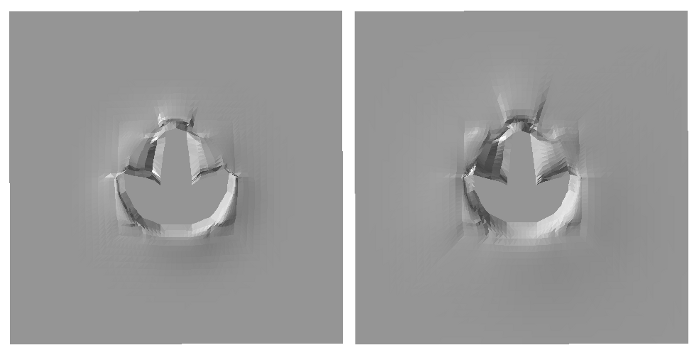
Visualizations of simulated fossilised dinosaur foot prints. The surface indentation is shown and shading gives depth. The image on the left shows an imprint that is produced by pushing the foot into the soil evenly while the one on the right is produced by rolling the foot from heel to toe. The distortion has been exaggerated to make it obvious.
So far we have recreated the look of a fossilised foot print, we can see the indentation, however there is displacement and compression below the surface. It is useful to know what has happened in the 'pressure bulb'.
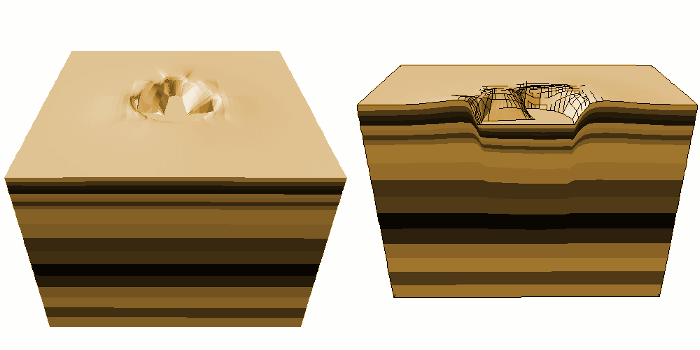
The simulation uses a regular mesh of cubic elements. This has been coloured so that layers 'parallel' to the surface are obvious and displacement and distortion to the cubic components of the mesh can be seen. The image on the left shows the surface displacement created by a foot imprint. The image on the right shows a cross section through the foot print, it is clear that the layers beneath it have been distorted. In this image the external edges of the mesh have a black outline; this highlights the distortion of the mesh on the surface. Again the distortion is exaggerated.
Much greater detail of the distortion in the 'pressure bulb' can be seen by using a finer visualization technique. These results are more difficult to interpret when the mesh is distorted so they are applied to the original mesh which has no distortion.
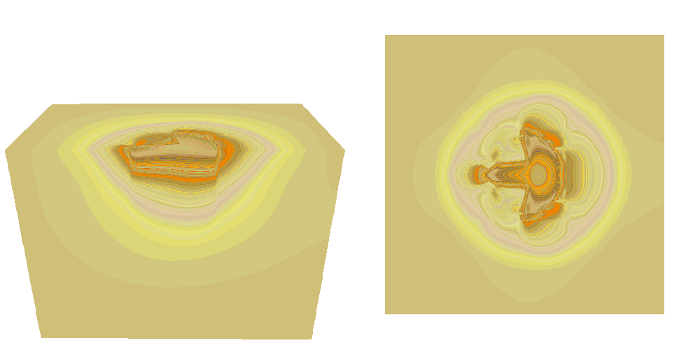
This technique shows much greater detail. The lines are equvalent to isolines. Contrasting colours have been used to make the shape of the features stand out.
To would be useful to understand the extents of the 'pressure bulb'; knowing its size and shape are necessary for this analysis.
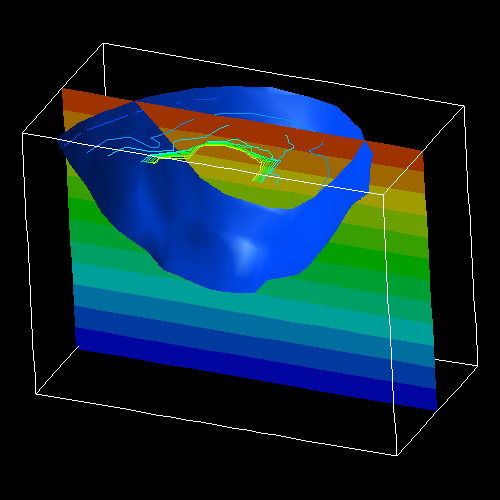
An isosurface of displacement shows the extents of the pressure bulb and isolines give possible outlines for the foot print on the surface. The data is of a half foot print.
This isosurface is not useful it does not relate to any obvious element in the photos of the fossilised foot print, although an isosurface with a higher isovalue would probably be useful. However the isolines are useful as they look like the outline of a foot print. The simulation must calculate other properties in the compressed soil in order to calculate the displacement.
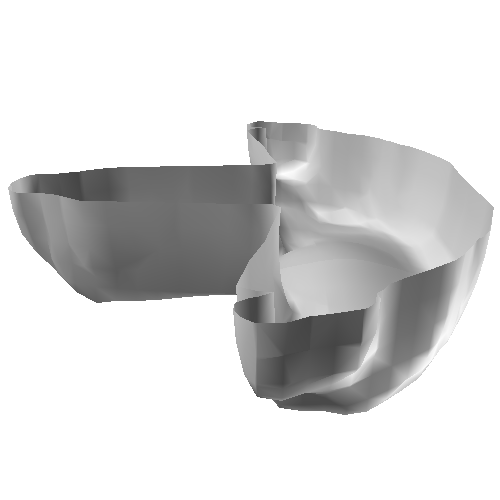
An isosurface of mises stress a feature that looks like a foot print.
We now have enough information to understand how we can best compare the simulation to the photos of fossilised foot prints. Isolines give the outline that best fits our needs however the isolines change throughout the 'pressure bulb' so it is best to produce a series of isolines for a series of depths.
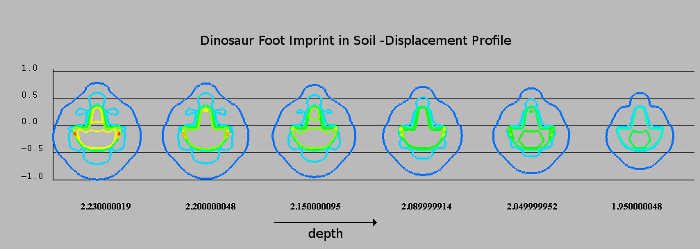
A series of isolines of displacement at a series of depths. The isolines get progressively deeper from left to right.
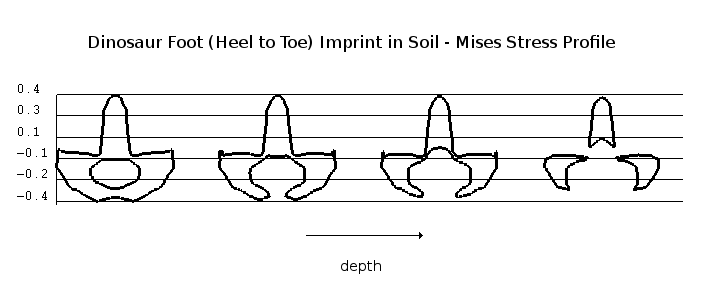
An isoline of mises stress at a series of depths; the same isovalue is used for all depths. The isolines get progressively deeper from left to right.
Last updated by Joanna Leng on the 23rd of August 2011.